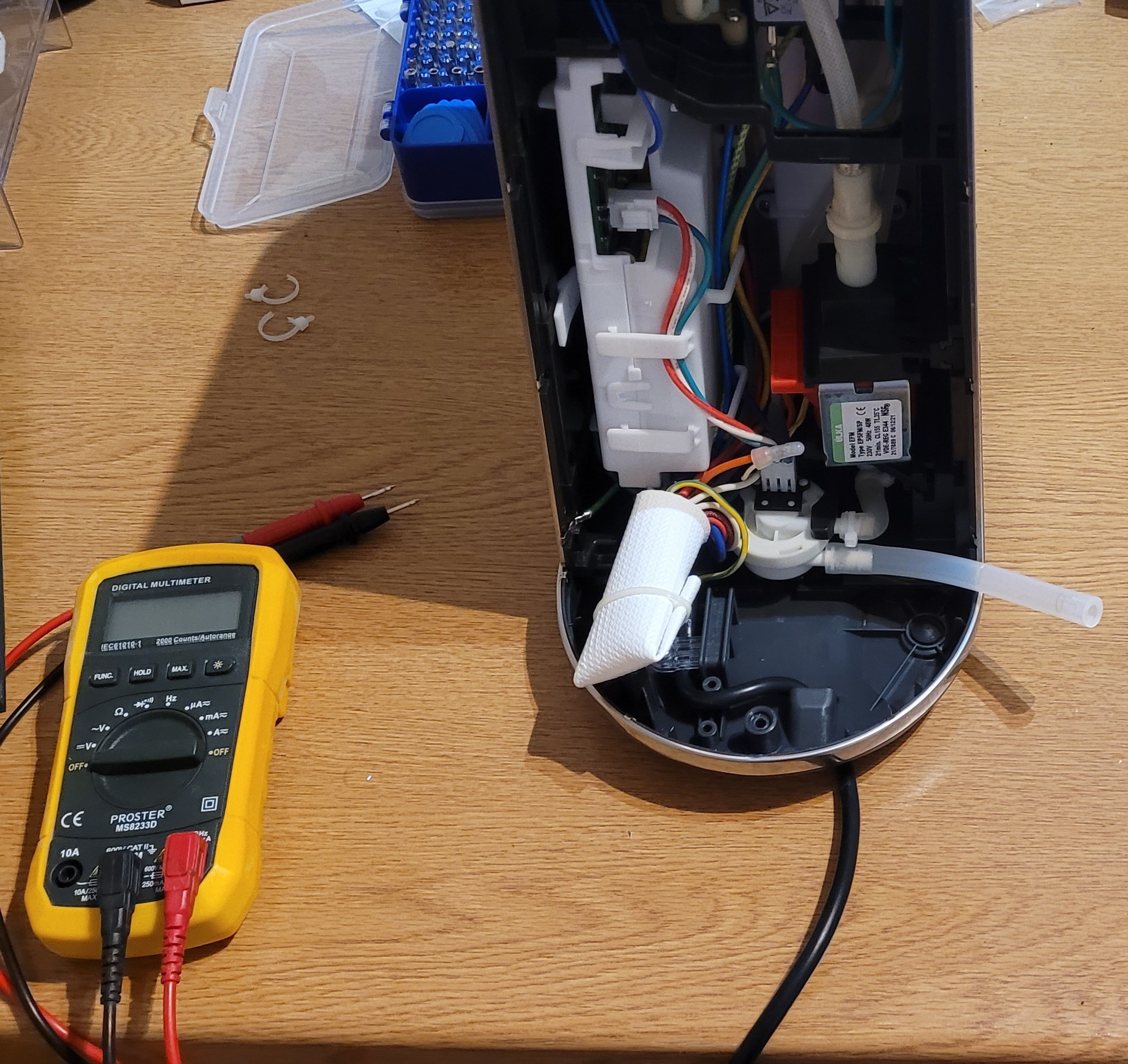Coffee Break
The wonderful thing about having important conference talks to write is that so much gets done around the house. Fortunately, today wasn’t going to be that day, so I went to get a nice strong latte to help me focus. Any minute now I would be totally nailing that slide deck.
Sage Bambino Coffee Machine Repair
Back Story
The Sage Bambino is a small coffee machine, purchased on the advice of a certain someone who declined a morning coffee with me on the grounds that she’d ‘seen my coffee setup’. After telling a backstreet coffee machine dealer I wanted the kind with the ice cream scoop thing and the milk heating hosepipe, I was given a good deal on a refurbished Sage Bambino. Apparently anyone using the phrase ‘milk heating hosepipe’ doesn’t need anything bigger.
Issue with Water Pressure
The water pressure had suddenly become very low. It was taking five button presses to generate enough coffee for a latte. At first it seemed likely the filter was blocked. It is supposed to be changed every 12 weeks, but the purest water from the gritstone reservoirs of the Peak District has never seen limescale, so this Bambino had had the same filter for 18 months.
Changing the filter didn’t help. The next step was to try descaling and cleaning the system. Descaling products are recommended, but this coffee break had dragged on for 25 minutes already, and conference slides don’t prepare themselves.
Food grade citric acid was available. Mixing a 2% solution and running the descaling cycle might unclog any limescale or gunk:
$$ \ce{C6H8O7 + CaCO3 -> CaC6H6O7 + H2O + CO2 } $$Again, this didn’t fix the water pressure, so it was time to take the casing off and find out what all the bits of coffee machine do.
Anatomy of an Espresso Machine

The Sage Bambino, naked as the day it was born
Once the reservoir is removed from the back of the machine, and the back of the casing is off, you can see most of the major components. It looks quite cool in there, with kind of a steam punk vibe.
The water inlet is at the base. Up the left hand side, there is a white plastic casing containing the controller - a circuit board that presumably knows how to make coffee. There is a pump near the base, which has to force water up to the top of the machine through two hoses. One of those enters a solenoid valve, which doses the water flow. This is near the top of the coffee machine, between you and the heat coil when viewed from the rear. The heat coil itself is on top, presumably to stop it from overheating the wires. Wiring goes into the solenoid valve and the pump, as well as to the buttons and their back lights.
What to Check in a Sage Bambino with Low Water Pressure

Sage Bambino solenoid valve
Initially, there was no evidence of hoses being blocked, or of limescale anywhere. There were no obvious leaks which would account for the loss of pressure, and no visible damage to the pump or the solenoid valve.
Although quite complicated to unplug and un-plumb, the solenoid valve is removable. The armature looked clean and in good condition, and the electrical resistance between the terminals of its electromagnetic coil was 2.5kΩ - seemingly appropriate for a device of its size. As my coffee break entered its second hour, I turned my attention to the pump.
Pump Failure

Sage Bambino pump
The Sage Bambino uses a UKLA model EP5 pump. It is a vibratory pump. It can be actuated manually, or by its own solenoid coil. It is fitted with a thermal fuse, to stop it from overheating too much if you keep pushing the button: its duty cycle is 2/1min, meaning it needs a minute to cool down after two minutes of pumping. The thermal fuse cuts out at 35°.
The electrical resistance of between the terminals can only be measured in one direction, because it has a diode in it. If resistance is close to 0, it means the coil has shorted out. The reading I got was 5.4MΩ, which is far too high. The coil in my pump was cracked, probably from all the vibrations, and that was causing the loss of pressure.
Repairing the pump seemed like it wasn’t going to work, so I ended up ordering a new one from Amazon. It seems like any model EP5 pump will do - the replacement won’t be from the same manufacturer.
Conclusion
The most likely reasons for loss of pressure with a Sage Bambino coffee machine are:
- Blocked head group or portafilter
- Worn out or damaged pump
- Clogged or dirty valves
- Leaks in the system
- Limescale build-up
In my case, testing the electrical conductivity of the pump revealed the problem. The solution was simply to replace the whole pump. And I still haven’t finished writing that conference talk.
